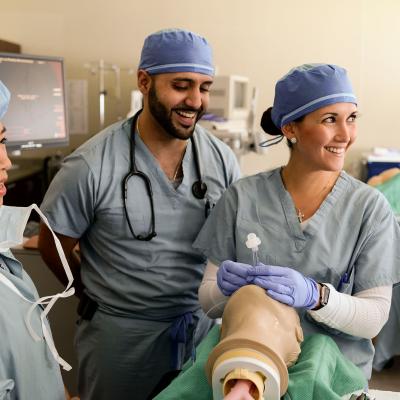- AdventHealth University

Current calculations have determined that one out of every twenty patients in the U.S. is given a totally inaccurate medical diagnosis. Sadly, these faulty diagnoses can result in permanent injury, death, delayed treatments, increased medical costs, as well as pain and suffering. There are several reasons why a misdiagnosis may occur.
To learn more checkout the infographic below created by Adventist University’s Online Bachelor of Science in Radiologic Sciences.
The lack of proper testing, inaccurate medical histories, and errors made when interpreting test results, are some of the most common reasons a misdiagnosis occurs. Three symptoms that tend to be the most frequently misdiagnosed are coughs, abdominal pains, and shortness of breath. When factoring in all of the reasons a misdiagnosis occurs, it can definitely be in a patient’s best interest to obtain a second opinion for a major illness diagnosis.
Frightening Statistics
Research indicates that the number of patients suffering from a misdiagnosis that could lead to permanent injury or death ranges from 80,000 to 160,000 each year. Additionally, intensive care units make fatal diagnostic errors that lead to 40,500 deaths in the U.S. annually. This staggering number is equivalent to the number of patients that lose their lives to breast cancer.
Another frightening statistic is the $4 billion spent annually on false-positive mammograms and the over diagnosis of breast cancer in women ages 40 to 59. Each diagnostic error can cost $300,000 or more per malpractice claim. These errors lead to increased medical malpractice insurance costs, which are inevitably passed on to patients.
Consequences of a Cancer Misdiagnosis
When it comes to cancer, a misdiagnosis has serious consequences regardless of the diagnosis that is given to patients. If a patient is misdiagnosed, it can lead to delayed cancer treatments, or treatment of cancer that is nonexistent. It is easy to see why a diagnosis as serious as cancer should be always be confirmed by another medical provider if possible.
Even though a second opinion can be costly, it could very well save a life. Cancer is a progressive disease that requires rather intensive and invasive treatments. Being treated for cancer without actually having it can have drastic consequences, but so can the need for this treatment and lacking it.
Other Consequences of Diagnostic Errors
Medical misdiagnosis is frightening to say the least, but fear is not the only consequence of these errors. It is estimated that up to 14% of diagnostic errors lead to immediate or inevitable death, and 19% of these errors lead to serious permanent death. Serious harm and permanent danger befalls 16% of patients with a misdiagnosis, and 38% of errors lead to considerable harm or the remediation of treatment.
In addition to these drastic percentages, nearly every misdiagnosis leads to emotional trauma to some extent. Some patients of medical diagnoses errors can risk loss of employment and financial setbacks of many degrees. These consequences can be even more drastic for patients without adequate medical insurance.
Modern Imaging and Medical Information Technologies Offer Accuracy and Hope
Over the years there have been many astounding advances in digital medical testing technologies. The following digital tests are phenomenal instruments that enable physicians to make accurate and lifesaving diagnosis: Multi-detector Computed Tomography (MDCT)-a highly accurate form of computed tomography (CT) that combines x-rays with computers to produce images that are more reliable than most other diagnostic testing, Digital Tomosynthesis- a combination of digital x-rays that produce 3D images; Computed Tomography (CT) Angiography-the combination of an injectable contrast dye that produces pictures of tissues and blood vessels.
A 4D Ultrasound uses high-frequency sound waves to capture images at multiple angles that provide three-dimensional depth and extraordinary detail in real time images. Another modern marvel is the Positron Emission Tomography (PET), this test uses a radioactive substance to create a tracer that will look for and locate diseases in the body. Magnetic Resonance Imaging (MRI) is capable of detecting several diseases and conditions ranging from a herniated disc, pancreatic cancer, to ADHD.
Medical Imaging Informatics (MII) gives physicians much better access to imaging data and reports so that a quicker and more accurate diagnosis can be provided to patients. Other information technologies that have enhanced appropriate diagnosis and improved health care are Electronic Health Records (EHR), and Computerized physician order entry (CPOE). When physicians use these modern technologies, they can offer patients higher levels of care that result in far fewer misdiagnoses. It can easily be said that the advancements of digital imaging and medical information technologies give physicians the tools they need to offer patients more accurate treatment options.


